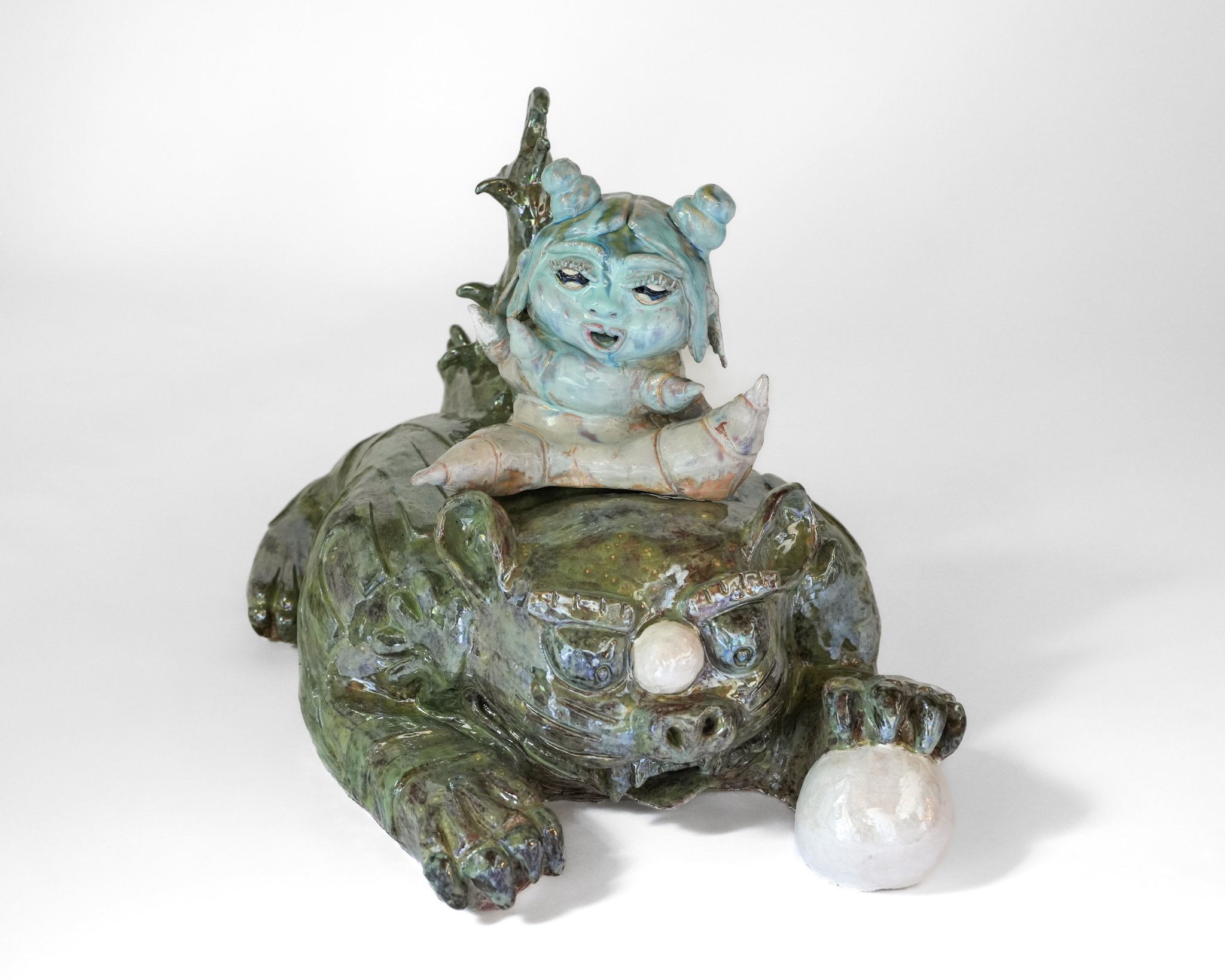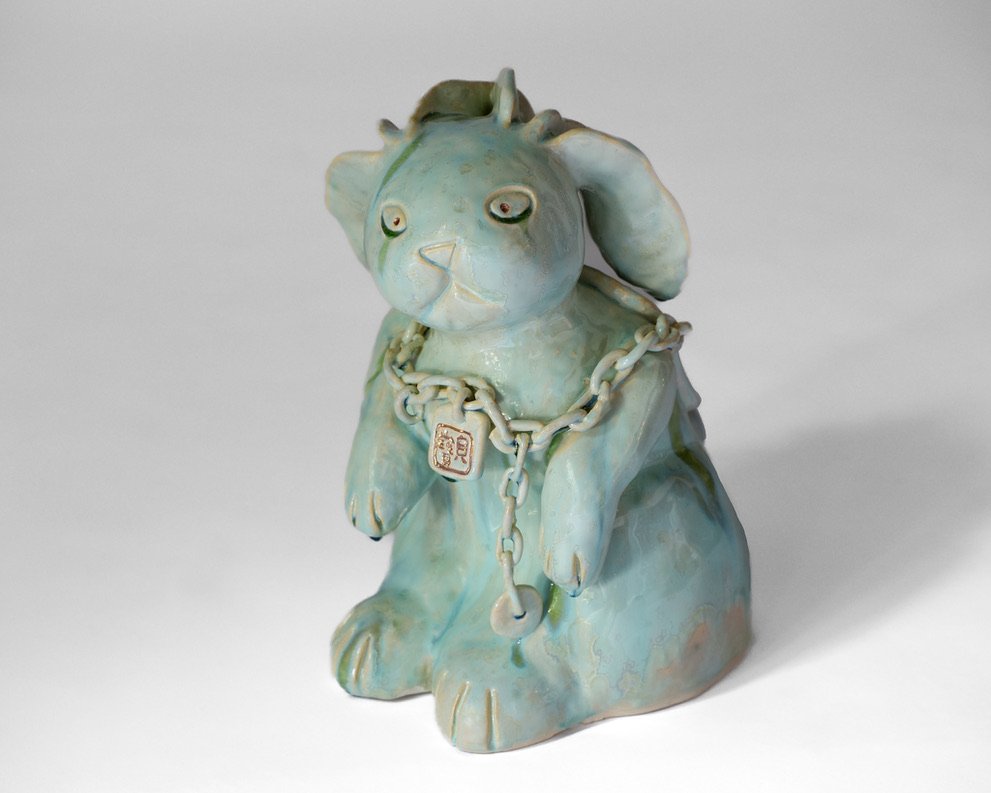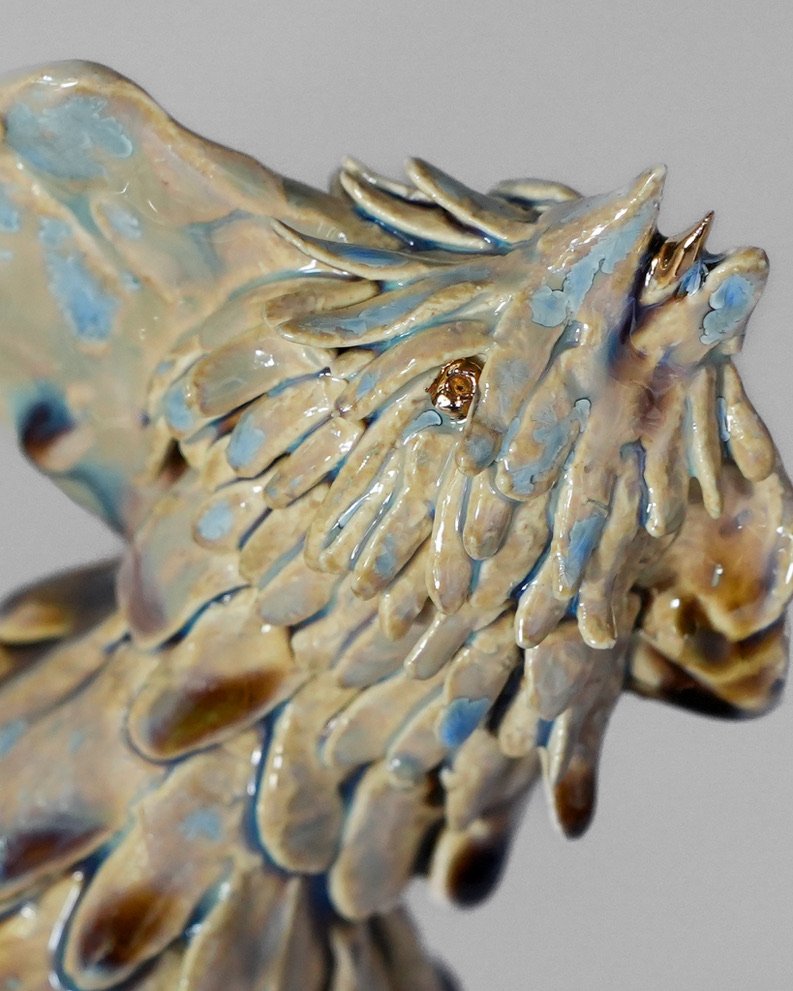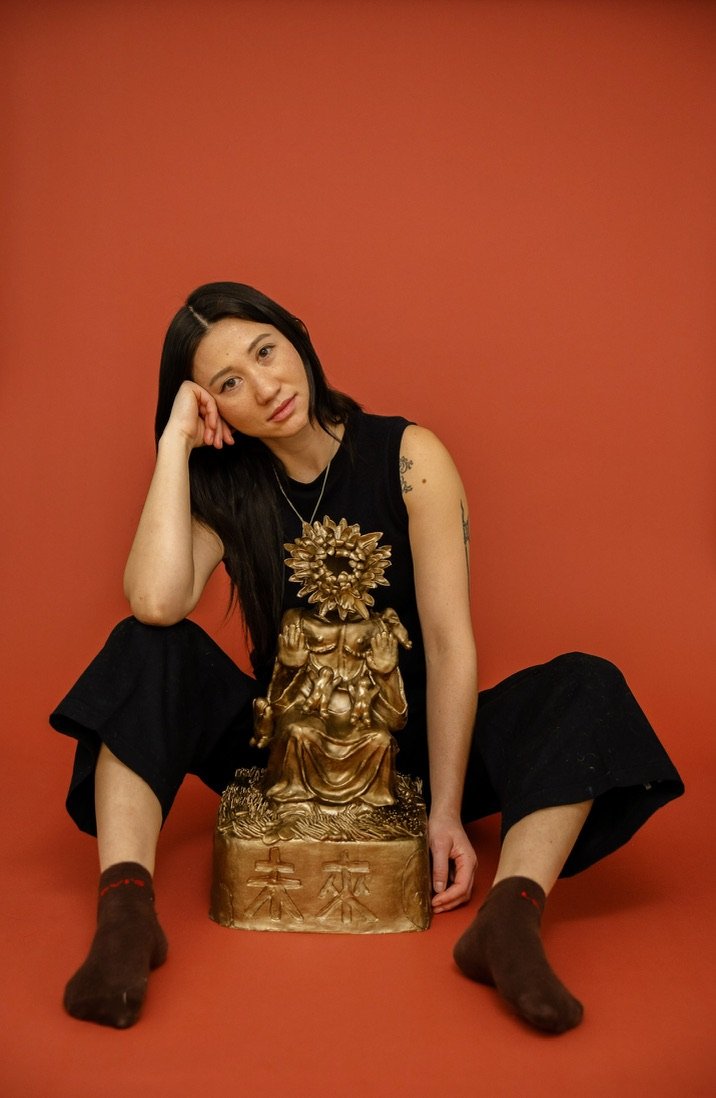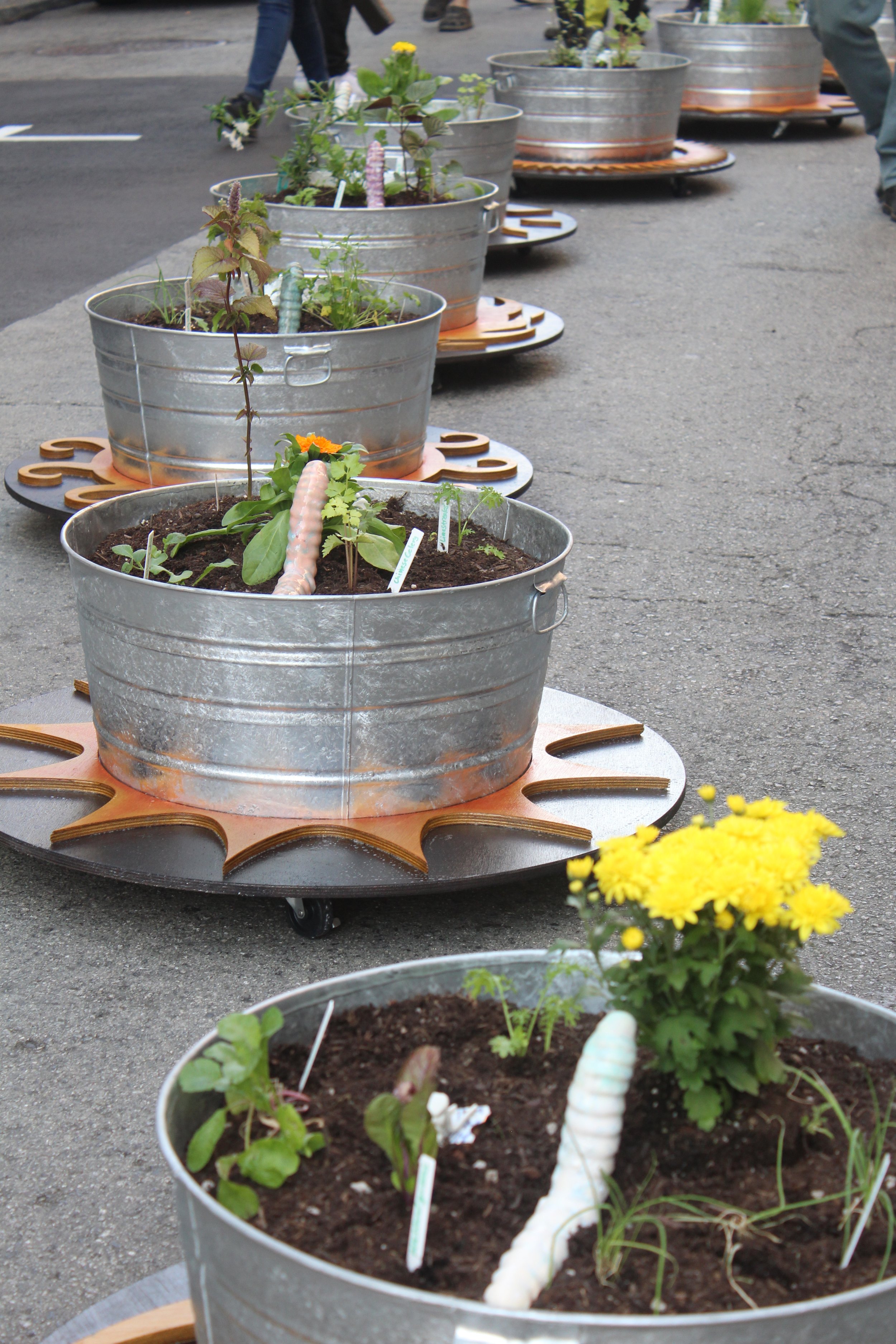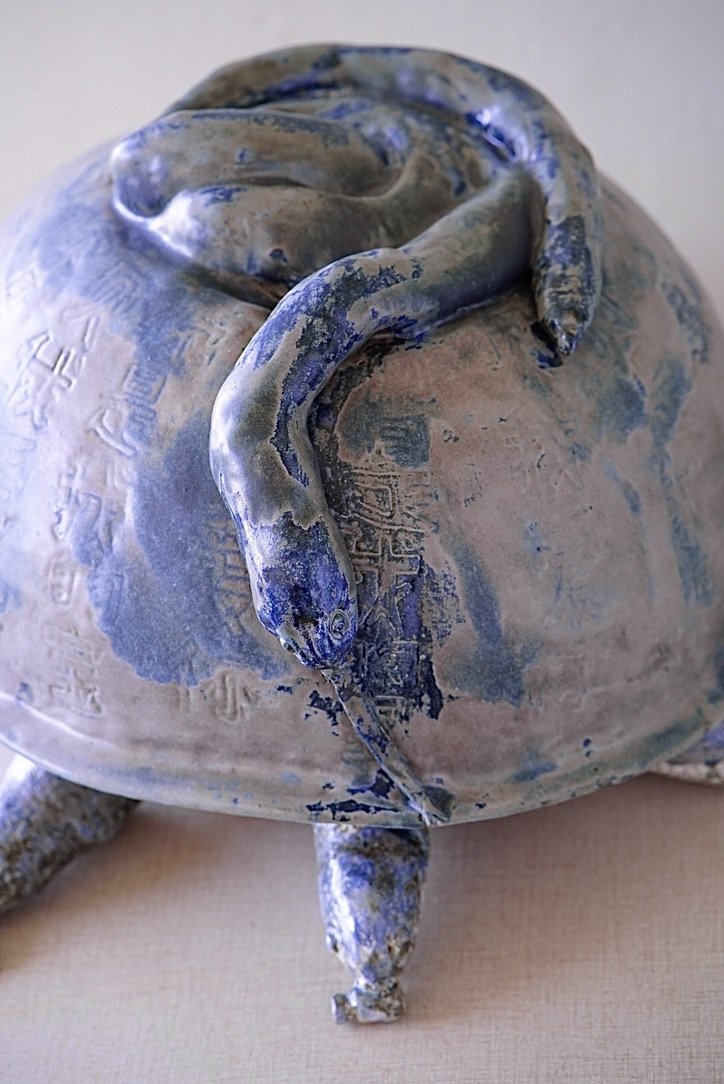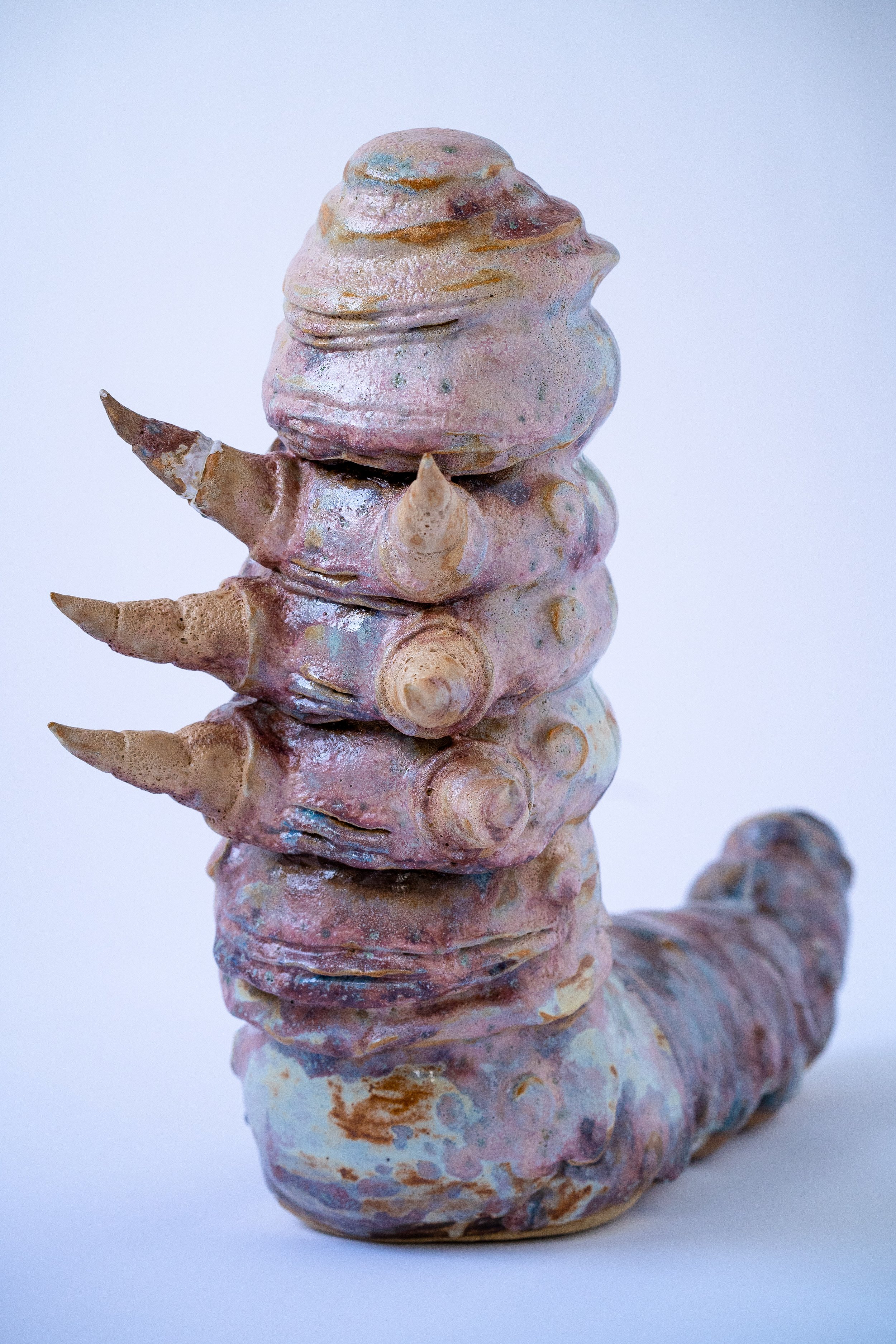智福 (Ze Fook) Fu Dog of Good Fortune
智福 (Ze Fook)
stoneware, glaze, gold
11 × 10 x 16 inches (L x W x H)
Hadley Raysor Photography www.hadleyraysor.com
智善 (Ze Seen) Fu Dog of Compassion
智善 (Ze Seen)
11 × 11 x 15 inches (L x W x H)
stoneware, glaze, gold
Hadley Raysor Photography www.hadleyraysor.com
Chrysocolla Crystalline Silkworm
2025
20 × 9 × 15 inches
stoneware, crystalline glaze by Ahn Lee
Hadley Raysor Photography www.hadleyraysor.com
Jade Crystalline Silkworm
2025
19 × 15 × 9 inches
stoneware, crystalline glaze by Ahn Lee
Hadley Raysor Photography www.hadleyraysor.com
白虎 White Tiger
白虎 White Tiger
2024
27 x 17 x 17.5
Ceramic, glaze, mother of pearl luster
Hadley Raysor Photography www.hadleyraysor.com
GOAT (FOURTH PILLAR OF DESTINY)
一路好走
Hadley Raysor Photography www.hadleyraysor.com
GOAT 一 FOURTH PILLAR OF DESTINY
一路好走
2024
22 x 10 x 21
Ceramic, crystalline glaze
The Goat is the Fourth and Final Pillar of Ahn’s Chart. The Goat is Blue and Light Yellow/White and of Yin Water just as the First Pillar of Ahn’s Chart. The Fourth Pillar represents the years of being an Elder. The Goat is a weaver, a storyteller, a nurturer and a stronghold in the community.
UNTITLED, TIGER (THIRD PILLAR OF DESTINY)
Hadley Raysor Photography www.hadleyraysor.com
TIGER (THIRD PILLAR)
2024
27 x 17 x 17.5
Ceramic, glaze, mother of pearl luster
The Tiger is the Third Pillar of Ahn’s BaZi. Meaning, the time of adulthood, 30+ up until the time of being an elder. This is a Green Yang Metal Tiger. This Tiger is the Ultimate Predator of the chart. The Tiger has learned/is learning how to respond to adversity, to go after what it wants and succeed. The Tiger holds an element of healing/medicine and mysticism. This Tiger’s Mother Pillar is intuition/emotion and ancestral Karma. This Tiger chases the Abstract and the Light.
RABBIT (SECOND PILLAR OF DESTINY)
Hadley Raysor Photography www.hadleyraysor.com
RABBIT (SECOND PILLAR)
2024
9 x 7 x 13
Ceramic, crystalline glaze, gold luster
The Rabbit is the second pillar of Ahn’s BaZi. Meaning, the Rabbit is the time of adolescence through early adulthood (around 30 years old). The Rabbit is the Ultimate Prey of the chart, yet also the survivor. Ahn’s Rabbit represents the healing of relationships, of the self, and of prioritization of relationships. This is a Yin Wood Rabbit of the color Green.
ROOSTER (FIRST PILLAR OF DESTINY)
Hadley Raysor Photography www.hadleyraysor.com
ROOSTER (FIRST PILLAR)
2024
8 x 16 x 18
Ceramic, crystalline glaze, gold luster
The First Pillar of Ahn’s BaZi, the Rooster is a Yin Water Rooster. The Rooster is the year in which Ahn was born, until adolescence. This rooster is fierce, and is of the colors Blue and White.
夢想未來 (Dream Future)
Photo by Aidan Jung
These I will not lose
Photo by Aidan Jung
Under the Same Sun with Edge on the Square
September 30th, 2023
Chinatown’s 2nd Annual Contemporary Arts Festival
Photos by Edge on the Square, Joyce Xi and Henrik Kam.
凤凰我爱你, To See and Be Seen, To Love and Be Loved
凤凰我爱你, To See and Be Seen, To Love and Be Loved
2023
18 in x 19 in x 27 in h
Ceramic, glaze
Photo by Aidan Jung
The Phoenix is perhaps one of the most known and auspicious of Chinese mythological beings. Its rare appearance is foretelling of harmony and played a key role in the creation of the cosmos. The Phoenix also represents immortality and both masculine and feminine qualities, transcending gender binaries and moving through time, space and lifetimes. My Phoenix has my partner’s top surgery scars, and has intentional detailed cracks where I removed and replaced the chest as a ritual part of creating this piece.
慢慢, slow
慢慢, slow
2023
20 in x 20 in x 13 in h
Ceramic, glaze
In ancient Chinese mythology, the tortoise with the snake wrapped over its shell is one of four symbolic creatures each pointing in a different direction. As a starting point for creating my queer take on Chinese mythology, I began with the snake and turtle, the north. While I significantly altered the symbolic creatures of each of the other directions, I chose to keep this one the same - a turtle and a snake signifying the element of water; and of stability, happiness and longevity. I added a bottle of testosterone in the mouth of the turtle, and carved on its back “我爱你。你是我的宝贝。” (I love you. You are my treasure.)
合家平安 May our family be safe and peaceful.
合家平安 May our family be safe and peaceful.
21 in x 20 in x 20 in h
Ceramic, glaze
Photo courtesy of Edge on the Square, 2023
In Chinese mythology, the toad symbolizes fertility, immortality, wealth, and connection to other worlds. The toad is often correlated with creation myths. A toad with coins is a common feung shui symbol, known for drawing wealth into a space. On the chest of the lower toad is a symbol for longevity, carved into the chest as armor. A smaller toad sits on top of the bottom toad, and the two share a tongue, referencing queerness and the mating position of frogs. On the coins in this piece, I carved 合家平安, a four character Chinese saying and one that includes the character for my name, 安. I used the character 合 rather than 阖 because the latter references someone else family, while the former references one’s own family. Together, the characters wish one’s own family safety from harm and peace. Typically this is placed near or above one’s entryway. I have one in my home that hangs on my doorknob, gifted to me on the lunar new year by my mother.
蚕王 (silkworm deity)
蚕王 (silkworm deity)
2023
28” L x 7” W x 30” H
Ceramic, glaze
A celestial silkworm deity, part of a new series of queered Chinese folk deities.
Photo by Aidan Jung






